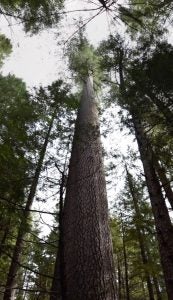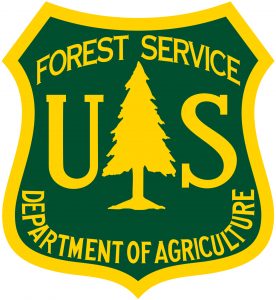Genomics of White Pine Blister Rust
White Pine Blister Rust (WPBR) is a fungus that mortally infects many 5 needle pines, including sugar pine (Pinus lambertiana). Resistance to WPBR in sugar pine is controlled by a single gene (qualitative) and a multi-gene (quantitative) pathway. Traditional methods for combating WPBR involve harvesting cones from potentially resistant trees, growing the seedlings in a nursery, then screening for resistant phenotypes through exposure to WPBR. This is a very time and cost intensive process which can be greatly improved using genomic tools. Instead, using the publicly available sugar pine genome, resistance within individual trees can be rapidly determined by genotyping the loci controlling resistance from the DNA of just a few needles. Our research is currently locating these regions in the genome. Once available, this diagnostic tool will allow forest managers to rapidly increase their response time to WPBR and improve overall forest health.
White Pine Blister Rust Genomics Team
University of California, Davis
Northern Arizona University
Forest Genomics Lab
Matthew Weiss
US Forest Service
Dorena Genetic Resource Center
Richard Sniezko
John Hopkins University
Steven Salzberg
Daniela Puiu
Resources
Click here to download the sugar pine genome and transcriptome.
Press
Sacramento Bee, August 21, 2017: Genetic Screening to Speed Up Search for Resilient Pines in Tahoe Forests.
The California Aggie, December 2, 2019: Reforestation of sugar pine trees in Lake Tahoe basin.



